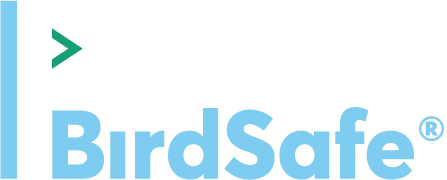Canadian research¹ estimates 25 million birds fatally collide with windows at low, mid and high-rise buildings annually.
¹Quantifying Human-related Mortality of Birds in Canada, September 2013

Canadian research¹ estimates 25 million birds fatally collide with windows at low, mid and high-rise buildings annually.
¹Quantifying Human-related Mortality of Birds in Canada, September 2013
Workplace windows are everywhere: on walkways, entranceways, skyways, skyscrapers, atriums, and even transit stations and bus shelters. Below are applications of visual markers and other bird-friendly glass innovations known by FLAP Canada to be effective.
Make all windows visible to birds. Provide birds with visual cues or markers alerting them to the presence of glass. Below are the FLAP Canada standards for visual markers:
To learn more, visit flap.org/commercial.
FLAP Canada’s research into designing bird deterrent marker patterns determined that markers spaced evenly apart both vertically and horizontally tend to be less noticeable to the human eye. In an effort to ensure that marker spacing meets what research confirms as the maximum horizontal spacing of 5cm (2″), FLAP reduced the 10cm (4″) vertical gap to match 5cm. In doing so, FLAP Canada believes the markers to be more effective as a deterrent for smaller species like the golden-crowned kinglet, ruby-throated hummingbird and the brown creeper…some of the most frequently encountered species known to collide with windows during the day.
Note: BirdSafe and FLAP Canada do not endorse or recommend any commercial glass product or manufacturer, therefore, mention of commercial products on this website cannot be construed as an endorsement or recommendation. BirdSafe recommends consultation with glass manufacturer representatives for answers to your specific questions on price, quality, etc. or to request a quote for any window treatment.
Disclaimer: Results may vary depending on conditions such as landscaping, topography, building design, lighting, local bird populations and the condition of the product itself. No window solution can guarantee elimination of bird-window collisions. Reference Terms of Use.